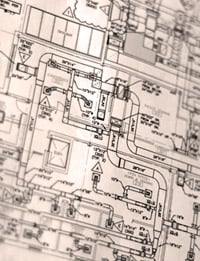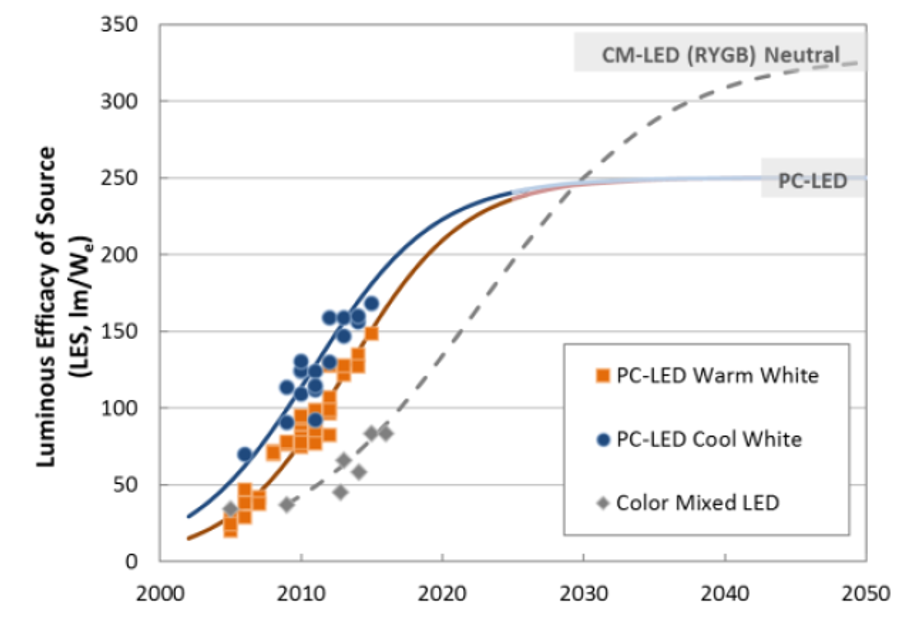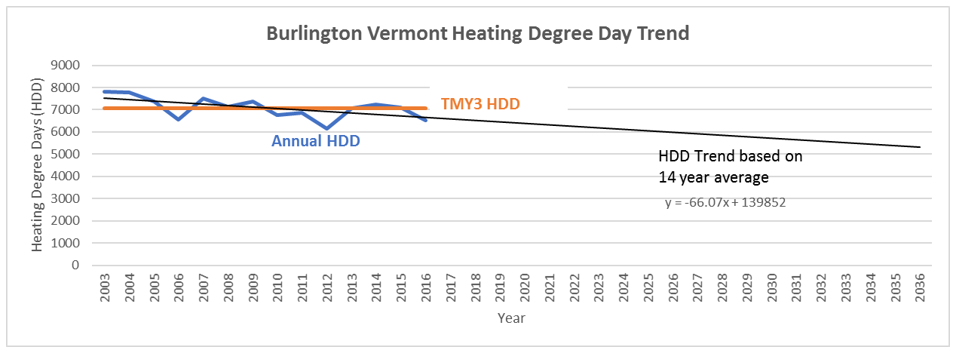A few years ago, while living in a small apartment in Montreal’s Plateau neighborhood, I noticed that the lightbulb in my kitchen had burned out. Naturally, I went to the hardware store to find a replacement. After struggling to read the French labeling on several different packages, I ultimately decided to go for the least expensive box of LED bulbs that the store had available. Once I installed the newly purchased lightbulb, I noticed a difference in the way our kitchen looked. Specifically, I noticed a difference in the appearance of the bowl of fruit that always sat on the counter. While the lightbulb illuminated the space, I remember thinking to myself how unappetizing and dull my fruit now looked. This exercise, though unintentional, clarified the importance of a light source’s color rendering capability.
3 min read
It’s All in the Lighting: A Closer Look at the CRI Method
By Wilson Yandell on Nov 20, 2019 10:00:00 AM
Topics: Standards and Metrics Energy Efficiency Lighting New Construction Existing Building design review
3 min read
Benchmarking and Beyond
By Katie Mason on Aug 23, 2019 10:00:00 AM
In a previous blog post, I discussed the energy benchmarking service we currently perform for a healthcare network using the Energy Star Portfolio Manager (ESPM) tool. This tool is used to monitor the energy usage of a building over time. It allows a user to set energy goals, compare the overall energy use intensity (EUI) to a baseline year, and compare the building in question to other buildings with similar use-types and characteristics. In addition to continuing this specific service for the healthcare network, Cx Associates uses the benefits of benchmarking in other areas of our work too. This blog post will discuss what other areas of our work utilize benchmarking and then provide a brief update on changes ESPM has made to their scoring metrics over the past year.
Topics: Standards and Metrics Energy Efficiency Building Performance & Technology retrocommissioning Energy Management Existing Building portfolio benchmarking Energy Planning energy monitoring & solutions Energy Audit Building M&V
3 min read
Occupant Based Controls for Energy Savings
By Daniel Tuhus-Dubrow on Jul 3, 2019 10:00:00 AM
I recently attended the Performance Evaluation Methodology for Building Occupancy Sensing Systems for HVAC Controls workshop, which followed the annual ASHRAE conference that just wrapped up in Kansas City, MO. The workshop focused on one of ARPA-E’s[1] research programs called SENSOR (Saving Energy Nationwide in Structures with Occupancy Recognition)[2], and brought together a diverse group of individuals, including researchers from national labs and universities, industry representatives, design engineers, and other interested parties.
Topics: Standards and Metrics Building Performance & Technology HVAC New Construction Existing Building Controls upgrade Efficiency Program Program Evaluation energy efficiency program M&V
3 min read
Why Design Review Is Crucial
By Thomas Anderson on Aug 29, 2018 10:00:00 AM
We often hear a question that goes something like this from building owners: “Why do I need an independent design review? I hire the best architects and engineers.” It’s a reasonable question — asked so often in my opinion because those of us in the architecture, engineering and construction industries have done such a poor job answering.
Topics: Building Cx & Design Review Standards and Metrics commissioning New Construction design review
5 min read
Is Electrification of Space Heating a Positive Step?
By Eveline Killian on May 16, 2018 11:30:00 AM
When I started in the energy efficiency profession 20 years ago, the object of my job was to reduce electric demand on the grid. This was to be accomplished through energy efficiency and a strong emphasis to fuel switch equipment from electric to fossil fuels (specifically electric heat to natural gas or oil heat). At the point of use (our building), traditional electric heat is 100% efficient, meaning 100% of the electricity within our building is transferred into heat within our building. But the electric generation (at the power plant), and the transmission, and distribution process makes the entire process about 30% efficient. This means an oil or natural gas heating system, operating at approximately 80% efficiency at point of use, is inherently more efficient than traditional electric heat given the current electric grid generation mix. Heat pumps, however, have changed this calculation, with heating efficiencies of over 300%. Thus, the world is changing back to electric heat through heat pumps (refer to Gretchen’s blog from February 2017, Heat Pumps Catered to Colder Climates; Will Increased U.S. Adoption Continue?). Is this a good thing? ‘Experts’ seem to agree that it is, but I have been curious to do this calculation myself as adding electric load to the grid goes against my deep-rooted mindset.
Topics: Standards and Metrics Energy Efficiency Building Performance & Technology
6 min read
The Right Light for Your Building: Designing and Commissioning Wireless Lighting Controls Systems
By Gretchen Schimelpfenig on Mar 28, 2018 3:21:54 PM
Lighting control systems have become more ubiquitous in recent years. Whereas five years ago, sophisticated lighting control schemes were the realm of a few performance venues, nowadays your neighborhood grocery store uses wireless lighting controls that can be complex to calibrate and require attention to detail from design through to occupancy. Commissioning is vital to ensuring that installed equipment operates as designed and provides adequate light levels and indoor environmental quality, and user controls function as intended.
Topics: Building Cx & Design Review Standards and Metrics Energy Efficiency
5 min read
Who is Responsible for Low Energy Code Requirements for Lighting?
By Jennifer Chiodo on Mar 14, 2018 2:00:00 PM
I have repeatedly blogged about my concerns with the current and future energy codes because the codes are not keeping up with technology for lighting efficiency (see my previous blog posts titled “Why are Lighting Energy Standards Decreasing” and “More Issues with the Energy Code – Lighting is Running Rampant”). The graphs below, developed by our friends at Optimal Energy, show some comparisons of Department of Energy (DOE) predicted efficacies for lighting technologies and the efficacy needed to meet code for some common space types.
Topics: Public Policy Standards and Metrics Building Performance & Technology
4 min read
ASHRAE Guideline 36: Benefits of Real World Implementation
By Rick Stehmeyer on Aug 23, 2017 2:00:00 PM
Back in 2015 I wrote a blog post about ASHRAE Guideline 36 - High Performance Sequences of Operation for HVAC Systems. I referenced a spec my team at Cx Associates wrote for a BAS controls upgrade. Now in 2017, that spec, and the sequences contained therein, have been made into a fully functional BAS controlling 14 air handlers (AHUs), over 90 variable air volume boxes, and the central plant that serves them. Our firm artfully adapted the sequences to meet the needs of the building owner and the function of the building (healthcare) without sacrificing the high degree of complexity which yields the energy savings building automation systems have been promising for decades. After working on this project from specs to implementation, I can confidently say that Guideline 36 can deliver a reduction in energy consumption and improved comfort. The cost (excluding the norms of engineering labor, BAS reprogramming, and commissioning) is primarily paid through raising all ships. Let me explain.
Topics: Standards and Metrics Building Performance & Technology
3 min read
Quantifying Our Firm’s Carbon Footprint – Where to Start?
By Rachael Straub on Aug 16, 2017 10:00:00 AM
Early this year, Cx Associates and the Vermont Green Businesses Network (VGBN) were awarded the Burlington 2030 District Director contract. Cities and towns that become an established 2030 District commit to the Architecture 2030 Challenge, which requires all new buildings, developments, and major renovations to be carbon-neutral by 2030. Cx Associates and VGBN, as the Burlington 2030 District Director, are tasked with developing a roadmap for the newly established Burlington District and assisting it to become self-sufficient.
Topics: Sustainability Standards and Metrics
3 min read
Dangers of TMY3 Data in an Era of Changing Climates (Part 2)
By Jennifer Chiodo on Mar 8, 2017 12:00:00 PM
Hi, it’s me again – two blog posts in a row! I still haven’t had the time to compile the full TMY3 comparison picture that I envisioned when I started this rant. (See my last post if you want to learn the TMY3 basics.)

.jpg)








